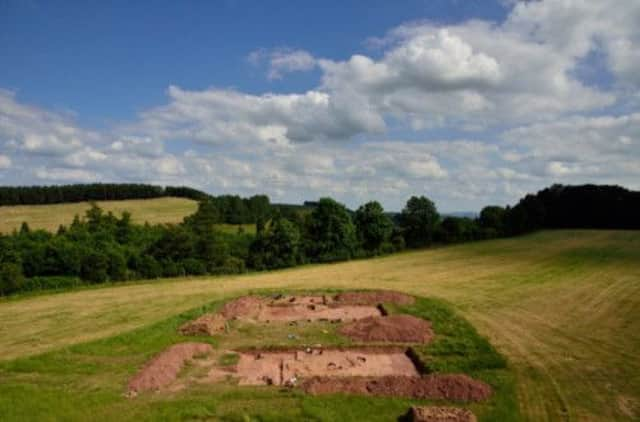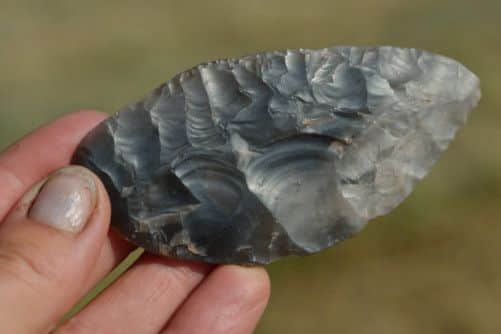Prehistoric ‘halls of dead’ found in Herefordshire


Archaeologists from the University of Manchester and Herefordshire Council discovered the remains of two large halls, thought to be constructed between 4000 and 3600 BC, on Dorstone Hill, near Peterchurch.
Each of the 6000-year-old buildings was found within prehistoric burial mounds, having been deliberately burnt down, according to the team, interpreting burnt wood found at the site, another UK first.
Advertisement
Hide AdAdvertisement
Hide AdThe buildings are thought to have been used by the whole community, and about 70 metres and 30 metres in length, similar in size to the Neolithic long barrows (burial mounds) they were found beneath.


The burnt timbers also give clues as to the buildings’ layout, likely to have been long structures with aisles and internal partitions, with the walls covered in clay daub, found in the core of the mounds.
Significance
Professor Julian Thomas, a University of Manchester archaeologist and co-director of the dig, said: “This find is of huge significance to our understanding of prehistoric life-- so we’re absolutely delighted.
“It makes a link between the house and a tomb more forcefully than any other investigation that has been ever carried out.
“These early Neolithic halls are already extremely rare, but to find them within a long barrow is the discovery of a lifetime.”
He added: “The mound tells us quite a bit about the people who built it: they sought to memorialize the idea of their community represented by the dwelling.
“And by turning it into part of the landscape, it becomes a permanent reminder for generations to come.
“Just think of how the burning of the hall could have been seen for miles around, in the large expanse of what is now the border country between England and Wales.”